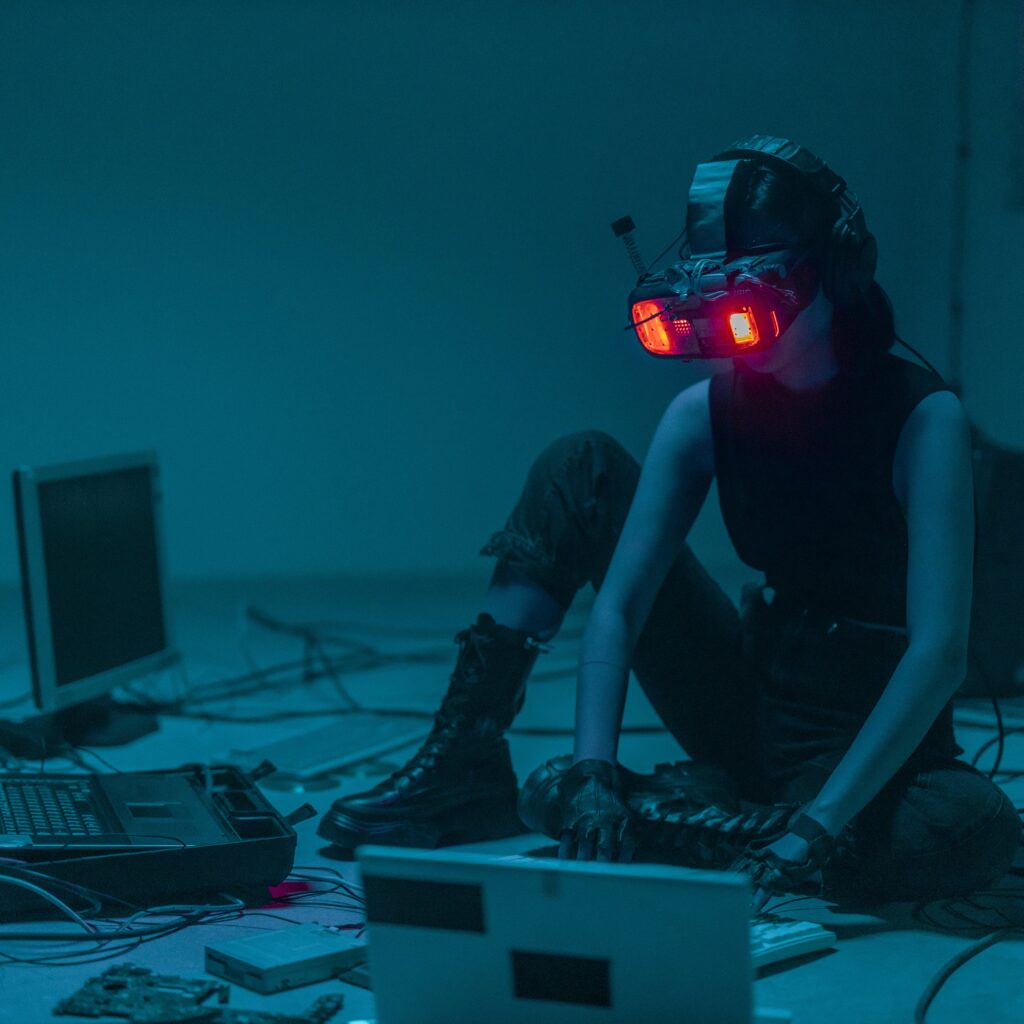Imagine a world where your virtual assistant isn’t confined to the limitations of your smartphone or computer screen. Instead, it’s able to interact with you and your environment in a truly immersive way. This is where augmented reality (AR) comes into play. By merging the digital world with the real world, AR has the potential to revolutionize the capabilities of virtual assistants. In this article, we will explore the role of augmented reality in enhancing the capabilities of virtual assistants, and how this emerging technology is shaping the future of AI-powered assistants. Get ready to step into a future where virtual assistants are no longer just a voice or a text on a screen, but a seamless part of your everyday reality.

Understanding Virtual Assistants
Virtual assistants are AI-powered software programs that can perform a variety of tasks and provide assistance to users through various communication channels. They are designed to mimic human interactions and can understand and respond to natural language commands and queries. Virtual assistants have become increasingly popular in recent years, with the emergence of voice-controlled smart speakers and mobile devices.
Definition and functions of virtual assistants
Virtual assistants are designed to help users with tasks such as answering questions, managing appointments, providing reminders, making reservations, and even controlling smart home devices. They can access information from the internet, perform basic tasks like sending emails and setting alarms, and provide personalized recommendations based on user preferences. Some popular virtual assistants include Siri, Google Assistant, and Amazon Alexa.
Types of virtual assistants
There are different types of virtual assistants tailored for specific purposes. Personal virtual assistants, like Siri and Google Assistant, are designed to assist individuals with day-to-day tasks. Enterprise virtual assistants, on the other hand, are used in business settings to automate processes, assist with customer support, and improve efficiency. Virtual assistants also vary in terms of the platforms they operate on, including mobile devices, smart speakers, and even chatbots on websites.
Introduction to Augmented Reality (AR)
Augmented reality (AR) is a technology that superimposes digital information and virtual objects onto the real world. It enhances the user’s perception of reality by blending computer-generated content with the physical environment. AR can be experienced through devices such as smartphones, tablets, and smart glasses, which overlay digital elements onto the user’s view of the real world.
Definition and concept of augmented reality
Augmented reality involves integrating virtual elements into the real world, creating an interactive and immersive experience. By using cameras and sensors, AR-enabled devices can detect the user’s surroundings and overlay digital content accordingly. This content can range from 3D models and animations to textual information and real-time data.
Use cases of AR in various industries
Augmented reality has found applications in numerous industries. In healthcare, AR can assist surgeons during operations by providing real-time visual guidance and overlaying patient data onto their field of view. In manufacturing and logistics, AR can enhance worker efficiency by providing step-by-step instructions and highlighting potential hazards. Retail and e-commerce can benefit from AR by allowing customers to visualize products in their own environment before making a purchase. AR can also be utilized in education and training to create interactive learning experiences, and in customer support to guide users through troubleshooting processes.
Integration of AR and Virtual Assistants
The integration of augmented reality and virtual assistants opens up a world of possibilities in terms of enhancing user experiences and improving efficiency. By combining the capabilities of both technologies, users can receive real-time information, interact with virtual objects, and perform tasks seamlessly.
Exploring the possibilities of combining AR and virtual assistants
When AR is combined with virtual assistants, users can benefit from a more intuitive and immersive interaction. For example, instead of relying solely on voice commands, users can use gestures or visual cues to interact with virtual objects or access information. Additionally, virtual assistants can leverage the spatial awareness provided by AR to better understand the user’s surroundings and provide contextually relevant information.
Benefits of integrating AR and virtual assistants
The integration of AR and virtual assistants offers several benefits. Firstly, it enables more intuitive and natural interactions by allowing users to interact with virtual objects in the real world. Secondly, it enhances information display by overlaying relevant information onto the user’s view, eliminating the need to switch between screens or devices. Thirdly, it enables real-time language translation, allowing users to communicate with people who speak different languages. Finally, it improves spatial awareness and navigation, making it easier for users to navigate unfamiliar environments or find specific objects.
Enhancing Virtual Assistant Capabilities with AR
By incorporating augmented reality into virtual assistants, their capabilities can be enhanced in various ways. Let’s explore some of these enhancements below:
1. Augmented Information Display
One of the key benefits of AR is its ability to overlay digital information onto the real world. By integrating AR into virtual assistants, relevant information can be displayed in real-time, eliminating the need to switch between different applications or screens. For example, a virtual assistant could display weather information, calendar events, or even notifications directly in the user’s field of view.
2. Enhanced Visualization and Interaction
AR-enabled virtual assistants can provide a more immersive and interactive experience by allowing users to visualize and interact with virtual objects in the real world. For example, users could view and manipulate 3D models of products before making a purchase or receive step-by-step instructions overlaid onto their physical environment.
3. Real-time Language Translation
AR can also facilitate real-time language translation when integrated with virtual assistants. Users can have conversations with people from different language backgrounds, with the virtual assistant translating the spoken words into the desired language and displaying the translated text in real-time.
4. Spatial Awareness and Navigation
By leveraging AR’s spatial awareness capabilities, virtual assistants can provide users with enhanced navigation and location-based information. For example, a virtual assistant could guide users through a complex building or provide directions for reaching a specific destination by overlaying arrows or landmarks onto the user’s view of the real world.
5. Personalization and Customization
AR-enabled virtual assistants can personalize the user experience by tailoring information and recommendations based on the user’s preferences and context. For example, a virtual assistant could provide personalized shopping recommendations by overlaying virtual clothing items onto the user’s view or suggest nearby restaurants based on the user’s culinary preferences.

Challenges and Considerations in Augmented Reality for Virtual Assistants
While the combination of AR and virtual assistants holds great potential, there are also several challenges and considerations that need to be addressed:
1. Technical Limitations and Complexity
Implementing AR in virtual assistants requires advanced technologies and infrastructure, including powerful processors, high-resolution cameras, and accurate sensors. This can make AR-enabled virtual assistant devices more expensive and complex to develop and maintain.
2. User Acceptance and Adoption
The success of AR-enabled virtual assistants depends on user acceptance and adoption. Users may need to overcome barriers such as learning new interaction methods or concerns about privacy and data security. Educating users about the benefits and providing a seamless user experience will be crucial in driving adoption.
3. Privacy and Data Security
AR-enabled virtual assistants raise concerns about privacy and data security. As these technologies rely on capturing and analyzing real-time data from the user’s surroundings, there is a need to ensure that personal information is handled securely and used only for the intended purposes. Transparent privacy policies and robust data protection measures must be in place to address these concerns.
4. Training and Skill Development
AR-enabled virtual assistants require users to acquire new skills and learn how to interact with virtual objects in the real world. Training programs and user-friendly interfaces will be crucial in helping users adapt to these technologies and leverage their full potential.
Industries and Applications of AR-Enabled Virtual Assistants
AR-enabled virtual assistants can find applications in various industries, revolutionizing the way tasks are performed and improving user experiences. Let’s explore some of these industries and their potential use cases below:
1. Healthcare
In the healthcare industry, AR-enabled virtual assistants can assist surgeons during complex procedures by overlaying patient data, anatomical models, and real-time guidance onto their field of view. They can also provide remote assistance to healthcare professionals in diagnosing and treating patients, improving access to specialized care.
2. Manufacturing and Logistics
AR-enabled virtual assistants can enhance efficiency and safety in manufacturing and logistics processes. Workers can receive real-time instructions and guidance for assembly or maintenance tasks, reducing errors and improving productivity. Additionally, virtual assistants can use AR to locate and track inventory, optimize warehouse operations, and streamline logistics processes.
3. Retail and E-commerce
AR in virtual assistants can revolutionize the retail and e-commerce industry by providing immersive shopping experiences. Customers can virtually try on clothing and accessories, visualize furniture in their own spaces, and receive personalized recommendations based on their preferences and browsing history. AR-enabled virtual assistants can also assist with product information, comparisons, and purchase recommendations.
4. Education and Training
AR-enabled virtual assistants have the potential to transform education and training by creating interactive and engaging learning experiences. Students can visualize complex concepts, interact with virtual simulations, and receive real-time feedback. Virtual assistants can also provide personalized tutoring, adapt content to individual learning styles, and assist teachers in managing classroom activities.
5. Customer Support
AR-enabled virtual assistants can improve customer support experiences by providing visual instructions and troubleshooting steps. Users can receive real-time assistance for setting up or troubleshooting devices, reducing the need for phone calls or on-site visits. Virtual assistants can guide users through complex processes, answer frequently asked questions, and provide interactive tutorials.

Future Trends and Possibilities
The integration of AR and virtual assistants is still in its early stages, but it holds significant potential for future advancements. Here are some future trends and possibilities:
1. Advanced AR-driven Virtual Assistants
As AR technology continues to evolve, virtual assistants will become more sophisticated and capable of understanding and responding to complex commands and queries. They will be able to interpret gestures, facial expressions, and even emotions, enabling more natural and intuitive interactions.
2. Integration with Internet of Things (IoT)
AR-enabled virtual assistants can be seamlessly integrated with IoT devices, allowing users to control and interact with their smart home appliances, cars, and other connected devices using gestures or visual cues. This integration can further enhance convenience and automation in daily life.
3. Voice Recognition and Natural Language Processing
With advancements in voice recognition and natural language processing, virtual assistants will become even better at understanding and interpreting user commands and queries. They will be able to process speech in multiple languages, dialects, and accents, making them more accessible to a global audience.
4. Wearable AR Devices
Wearable AR devices, such as smart glasses and headsets, will become more prevalent, providing users with hands-free and immersive AR experiences. AR-enabled virtual assistants can leverage these devices to provide real-time information and guidance without the need for separate screens or devices.
5. Cloud-based AR Virtual Assistants
Cloud-based virtual assistants powered by AR can offer more processing power and storage capabilities, enabling them to handle complex tasks and deliver personalized experiences. These virtual assistants can also leverage cloud-based machine learning algorithms to continuously improve their understanding and responsiveness.
Conclusion
The combination of augmented reality and virtual assistants opens up exciting possibilities in various industries and daily life. By integrating AR into virtual assistants, users can benefit from enhanced visualization, intuitive interactions, real-time information, and personalized experiences. However, challenges such as technical limitations, user acceptance, privacy, and skill development need to be addressed for the widespread adoption of AR-enabled virtual assistants. With ongoing advancements and future trends, the role of augmented reality in enhancing the capabilities of virtual assistants will continue to evolve, shaping the way we interact with technology and the world around us.



